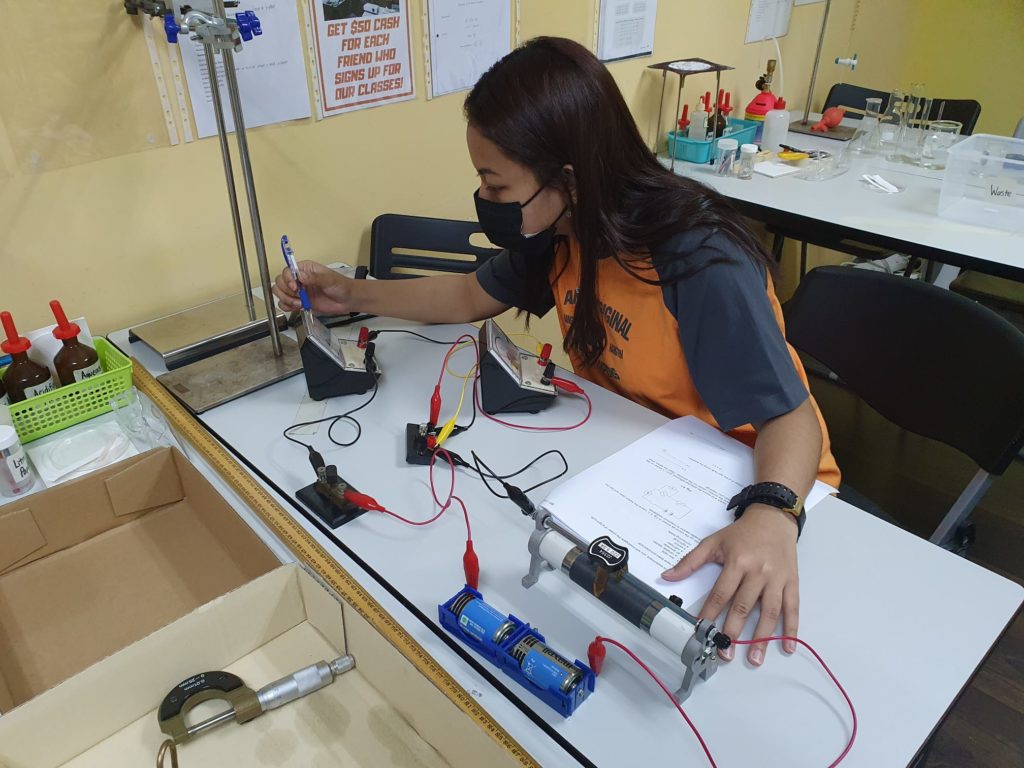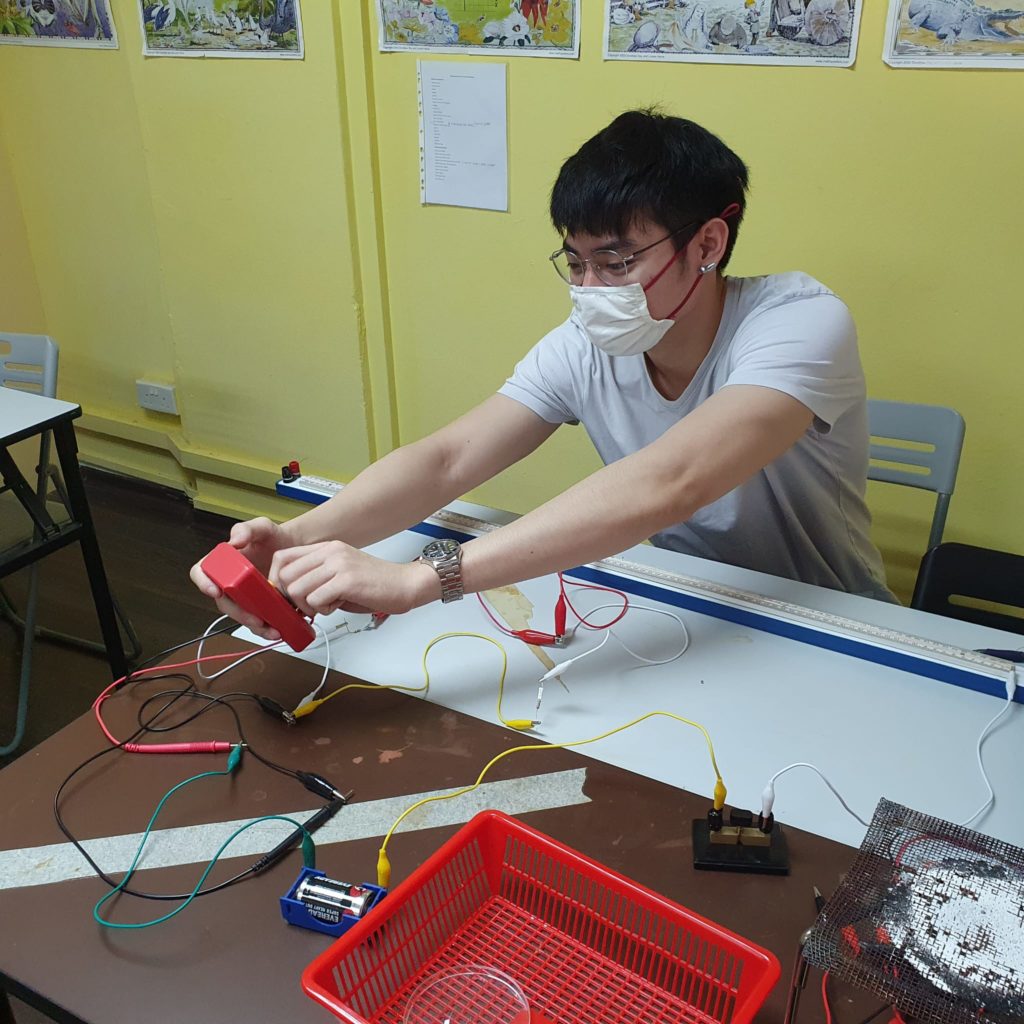| Key Ideas |
| 1. There are two types of electric charges: positive and negative charges.
2. Like charges repel, unlike charges attract. 3. Electric charge is measured in coulombs (C). 4. Electrostatic charging of insulators by friction involves a transfer of electrons. 5. Electrical insulators do not conduct electricity because they do not contain mobile charged particles. 6. Electrical conductors are able to conduct electricity because they contain mobile charged particles (electrons). 7. Electrical conductors can be charged by induction. 8. Electrical insulators that are charged can be neutralised (discharged) by heating or exposure to humid conditions. Electrical conductors that are charged can be neutralised by earthing. 9. During electrostatic charging and discharging, only electrons are transferred. 10. An electric field is a region in which an electric charge experiences an electric force. 11. The direction of the electric field is the direction of the force acting on a small positive charge placed in the field. 12. Some hazards of electrostatic charging are lightning, and electrostatic discharge near flammable substances. 13. Electrostatic charging is used in photocopiers, electrostatic precipitators to reduce air pollution, spray painting to produce an even coat of paint. |
IMPORTANT STUDY POINTS
| 1. | Be aware of the formula Q = nq to calculate the number (n) of charge carriers given the the charge (q) on one particle and the total amount of charge (Q). |
| 2. | As 1 C is a large amount of charge, must know how to use or convert units such as millicoulomb and microcoulomb. |
| 3. | Must know the difference between how insulators and conductors are charged, and how they are discharged, and be able to explain these processes only in terms of the transfer of electrons. |
| 4. | Must know the difference between what happens when an insulator touches a charged object and when a conductor touches a charged object. |
| 5. | Must know the correct sequence for producing two similarly charged conductors, two oppositely charged conductors and a single charged conductor. |
| 6. | Must be able to define electric field and draw electric field patterns. |
| 7. | Be able to describe the dangers of electrostatic charging. |
| 8. | Be able to describe how electrostatic charging is used in photocopiers, precipitators and spray painting. |
O-LEVEL PHYSICS PRACTICAL
O-LEVEL CHEMISTRY PRACTICAL
HOW TO BOOK A LAB SESSION:
(1) Decide which Program or Lab sessions you need or most suitable for.
(2) Whatsapp or Message our staff at 88765498 with your Name, Private or School Candidate, A or O level, Subject or Lab Name (e.g Lab PP2), Date and Time of Lab. (Our staff will then guide you on how to register and make payment. If you are not sure about the lab sessions, just state your Name and the Subjects and we will get back to you)
(3) Register Online by clicking below:
(4) Pay Registration fee of $50 via Paynow or funds transfer.
(5) Make the required payment for each lab session at least 7 days before the date of the lab session. (You may also pay for several sessions at one go to ensure that you will have a place in future slots)
MUST-KNOW PSLE MATH PROBLEM 3
Question:
Three boys spent the same amount of money on printers.
Henry spent 2/5 of his money, Jonas spent 3/4 of his and Fred spent 2/3 of his.
They had a total of $1440 at first. How much of money did each boy spend?
————————————————————————————————-
Answers:
Since Each boy spent the same amount of money, you make the numerator the same.
Henry Jonas Fred
2/5 x 3 3/4 x 2 2/3 x 3
6/15 6/8 6/9
The denominator now represents the total Units they each had.
15 Units 8 Units 9 Units
TOTAl Amount: $1440
Total Units : 15+8+9= 32 Units
32 Units -> $1440
1 Unit -> $45
Since Each of them Spent 6 units,
6 Units-> $45 x 6 = $270.
Each boy spent $270.
——————————————————————————————–
KEY WORDS/THINGS TO LOOK OUT FOR?
1) It is a Fraction question
2) It has words like Spent/used the Same/Equal .
I have made another similar sets of question below for you to MASTER THE TECHNIQUE. Let us know what are your answers on our Facebook Page “‘ https://www.facebook.com/SingaporeLearner/”. All the best for your revision.
——————————————————————————————-
Question 1:
Mary and Tom used the same number of beads to make jewelries.
Mary used 2/5 of hers and Tom used 3/4 of his. They both had a total of 2300 beads.
How many beads did each of them use?
Question 2 :
There are 540 people in Block A and Block B. 2/5 of the people in School A and 1/4 of the people in School B are Children. Given that there is an equal number of Adult in both Block A and Block B, how many Children are there in School A?
Some words of advice for O level Chemistry MCQ (Paper 1)
Tips to look out for O level Chemistry MCQ:
– Remember: you only have 1 hr to complete 40 questions, that is a maximum of 1 hr 30 sec for each question with zero time for checking at the end of the examination.
– My advice is to spend 1 minute for each question so that you can some extra time to come back and think about the questions you skipped and also do a quick check of your answers (e.g. whether you shade your answers correctly or not).
– Don’t spend too long on ONE question. If you don’t know, just skip first. Don’t waste time on ONE question you don’t know and rush through the last 10 questions towards the end when time is running out. The last 10 questions may be the easy questions to be answered!
– Shade your answers IMMEDIATELY. You can circle the answers on the question book but DO NOT leave it to the last minute to transfer your answers. If you have limited time towards the end, you will rush through the shading and most likely you will shade wrongly. You just need to miss one question for the whole shading process to turn into a disaster.
– Do your calculation questions fast and accurate, take note of careless mistakes.
– Remember the solubility rules at your fingertips and your Qualitative Analysis.
– Read the four options given to you. Do not rush into selecting the option you THINK is correct. Remember to always choose the BEST answer from the four options. Sometimes, 2 options may seem correct at first glance but you are to choose the BEST answer. You need to convince yourself that the other 3 options are WRONG. And you have to do this within the time limit.
– Be confident of your concepts. Study hard and you will excel in your Paper 1.
Good luck and all the best!
Mr Lee
(Mr Lee is Singapore Learner’s Chemistry Tutor)


